Angus Flora and Fauna
Much-needed company, a good reason to walk outside, a fun distraction, something to learn about... People shared incredible stories about their relationships with pets and wild animals during lockdowns.
A retired couple in Forfar were visited by a blackbird at the same time every day; a cat’s change in morning habit signalled a significant event for a man in Arbroath; in Brechin, a faithful dog kept a loved one company in their final days. For those shielding, windows were often our only connection with the outside world. As we looked out and observed, we began to notice that animals had kept their freedom and daily routines intact.
Emotional connections with animals were a frequent subject of conversation and creativity in Phase 1 of Angus Remembers. Walter Barnes spoke to us about the terrible loss of both his son Steven and his wife Pam during the pandemic. He also shared with us Steven’s breath-taking wildlife photography, including a remarkable series taken with a long-lens camera during a lengthy period of total isolation as he shielded at home.
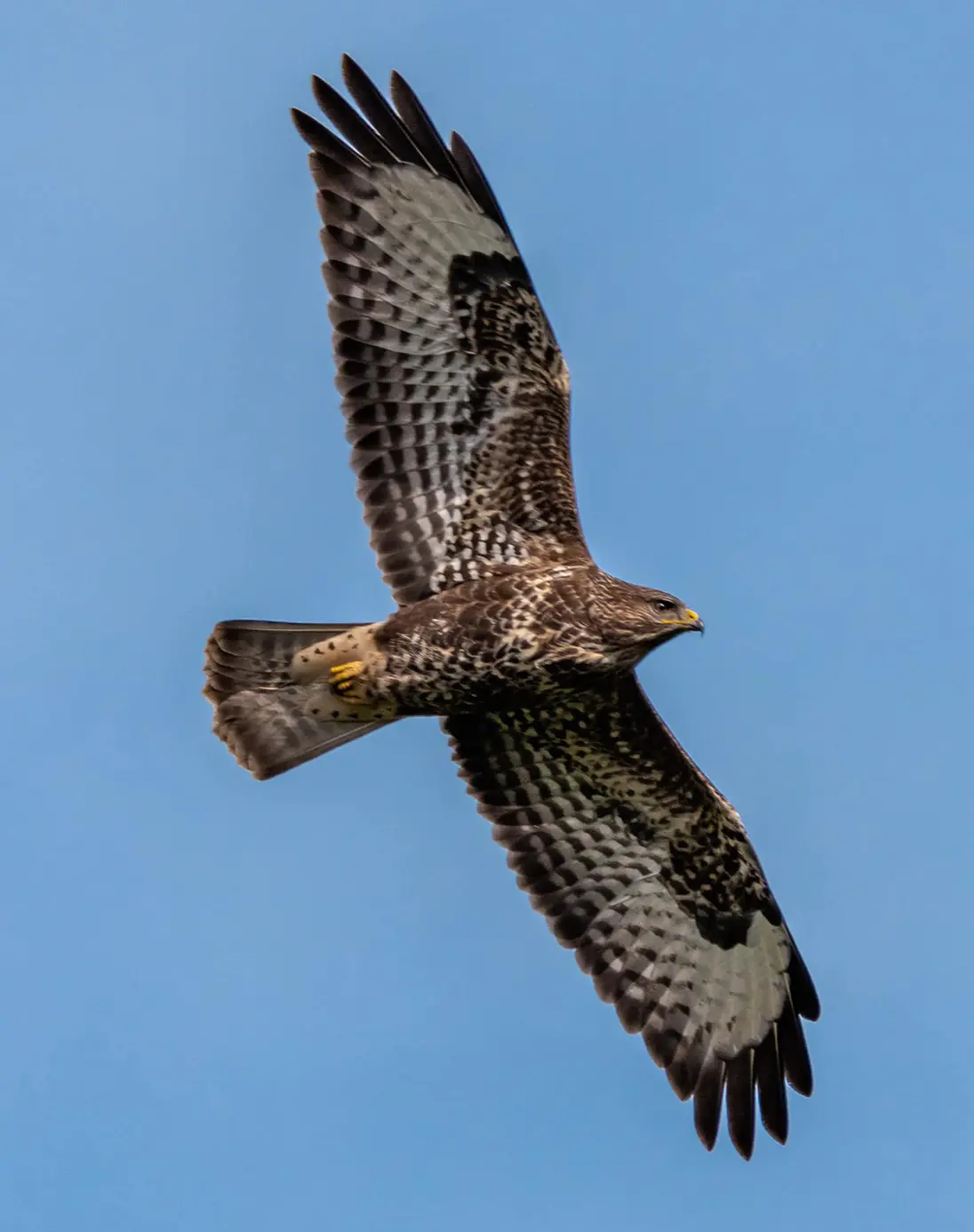
Common Buzzard
Larger than most hawks but considerably smaller than an eagle, which it is often mistaken for. The Common Buzzard can be seen all year round in Angus. They nest across all types of habitats, including farmland and woodland. They’re most easy to spot in the springtime when displaying. The buzzards prey on small mammals such as voles and mice but will eat almost any type of meat available. Even sitting on the ground eating worms. Good spots to look for them are around Edzell, Crombie and all road edges, including A92.

Red Kite
Once almost extinct in the British Isles, the Red Kite has made an incredible recovery in the past 30 years and can now be seen in many areas of Angus. It can hunt small mammals and birds but will rely upon scavenging most of the time. This tendency to scavenge means Red Kites are often drawn close to roads, they clean up roadkill and help to keep our countryside tidy. In Scotland, Red Kites became extinct in the 19th Century, but re-introductions in recent years have been very successful. Kites live in areas with farmland and hillsides with some tall trees. They are becoming a common resident in Angus. Look to spot kites in Balgavies loch Forfar, Glamis, Glen Esk and Glen Prosen and Edzell.
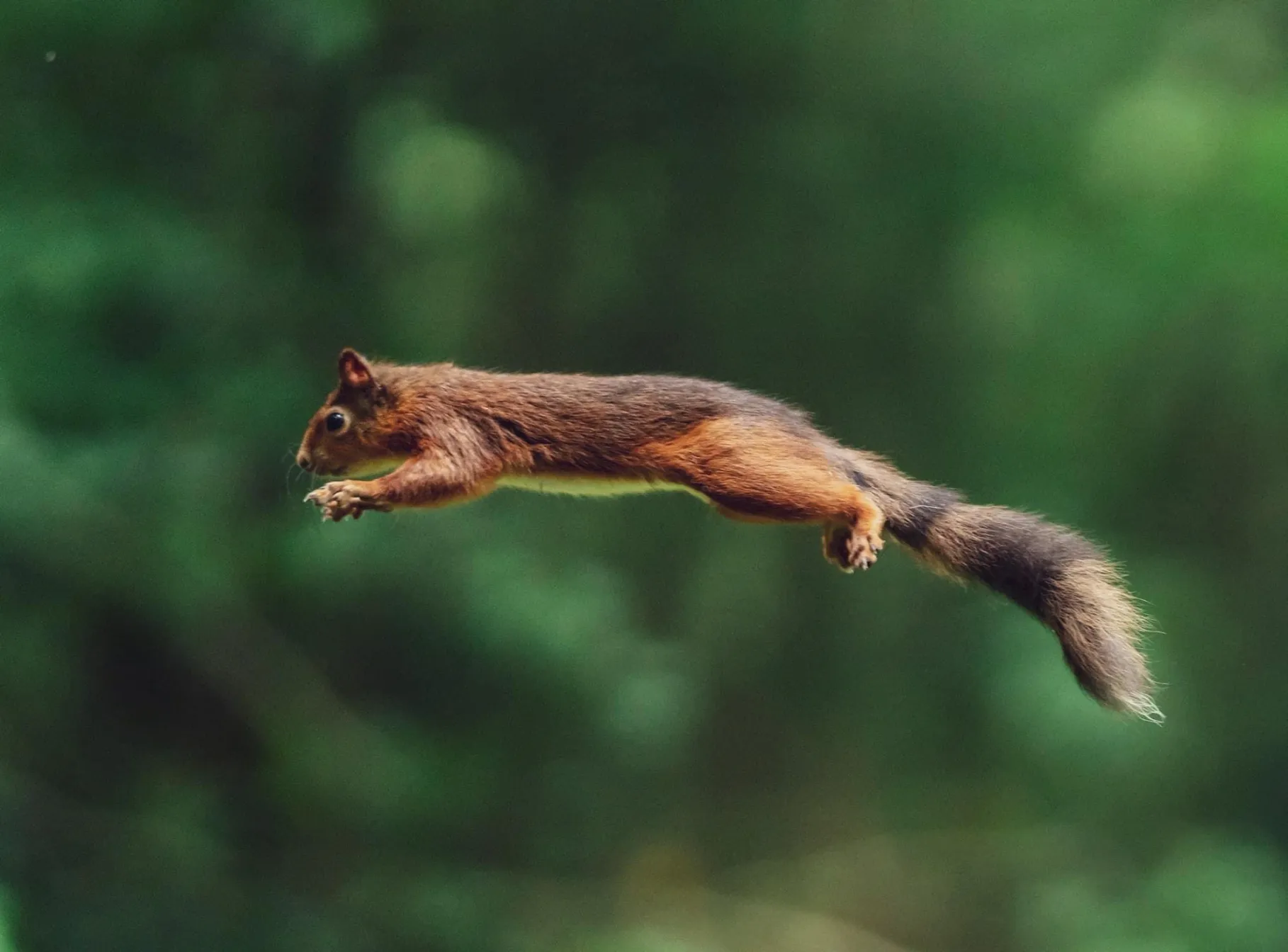
Red Squirrel
The red squirrel is smaller than a grey squirrel and has distinctive red-brown fur. These are our native squirrel. They can be spotted all year round, they don’t hibernate. They’re most often seen in the woods of Angus where they make their nests high in the trees. They keep stores of food and can be spotted collecting nuts or pine cones for when food is less plentiful. Look for them at Crombie, Monikie, Tarfside in Glen Esk, and Glamis Castle.
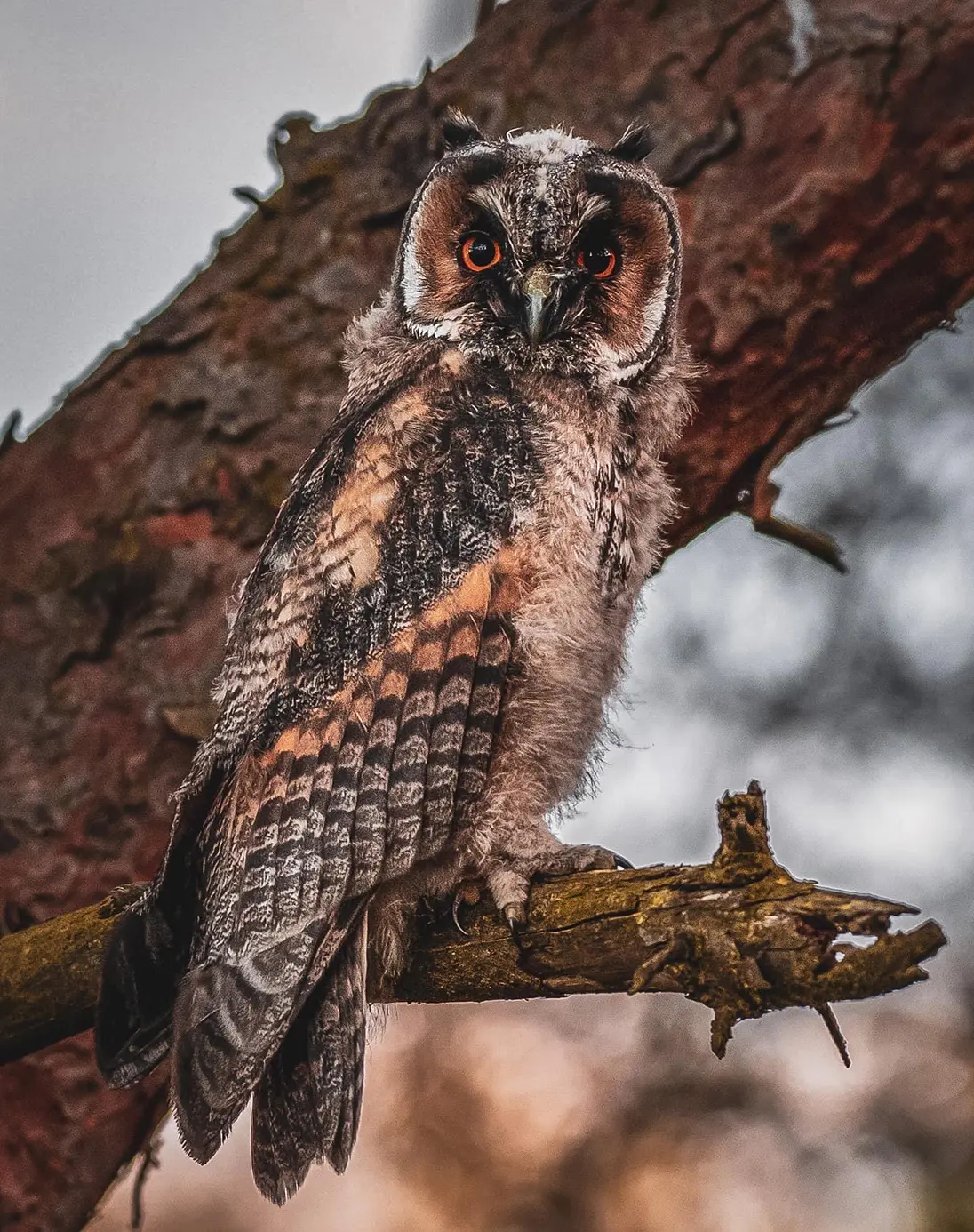
Long-eared Owl
This well-named owl is easy to tell apart from other species because of its long “ears”. In fact, these ears are tufted feathers that stick out from the top of the head, particularly when the bird is alarmed. It has bright orange eyes which is the other way to identify it. It is smaller in size than a woodpigeon. The Long-eared Owl lives mainly in coniferous woodland and can be very difficult to see because its colours perfectly blend into the surroundings. It hunts at night. They are so secretive even scientists have found Long-eared Owls difficult to study. In winter they roost together in groups called “Parliaments”. In winter we see extra Long eared owls staying with our own birds, they come over from Eastern Europe and other northern countries. Spot them along our Angus coastlines in winter and around Montrose Basin.
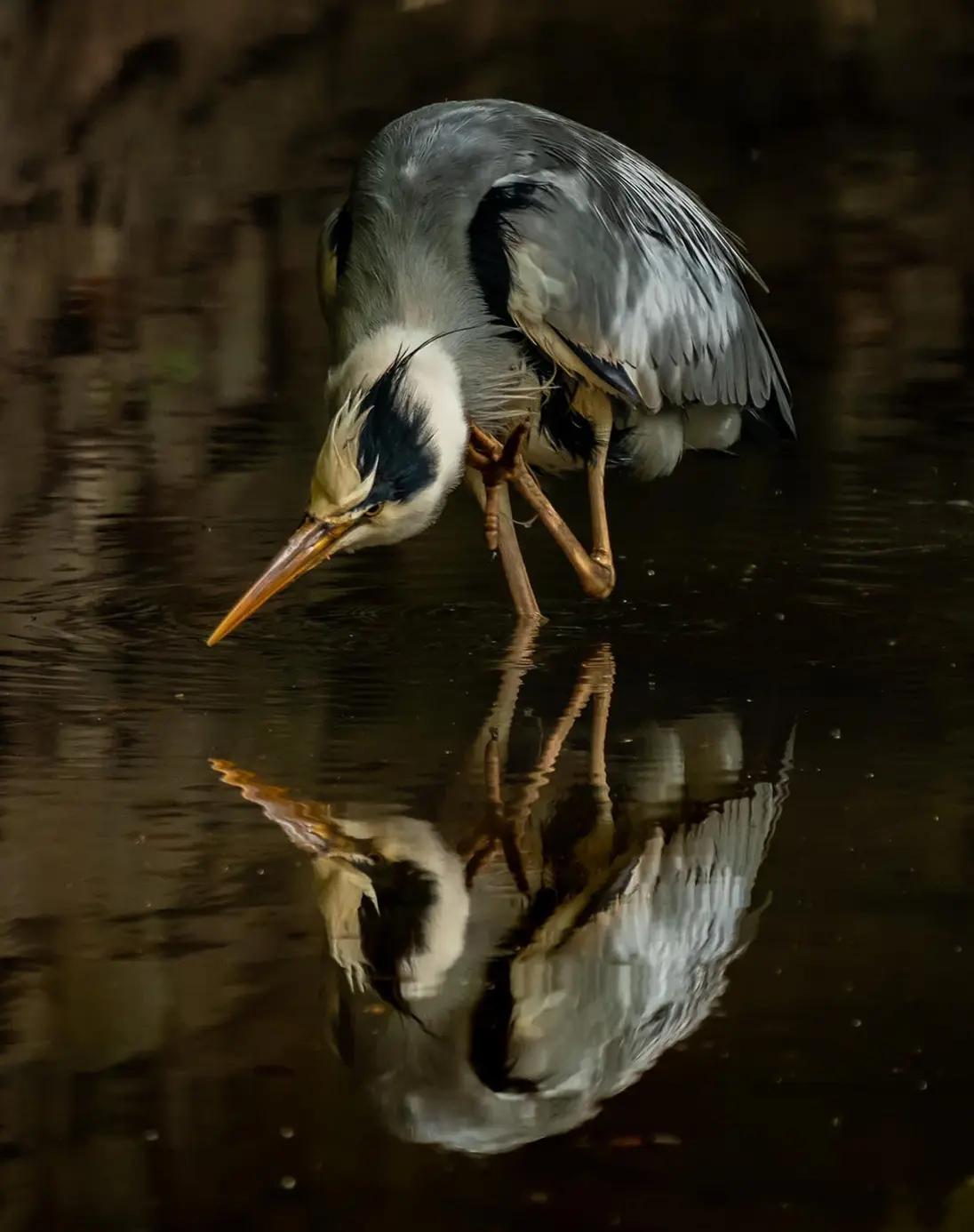
Grey Heron
Grey Herons eat a wide range of prey, from fish to frogs to mice and rats. They nest in high trees in large groups known as “heronries”. They are one of the earliest nesting birds in Scotland, nesting February-March. They will usually be seen stalking the edges of ponds, rivers and wetlands, but can also be seen on farmland at harvest time, searching for rodents to eat. The average lifespan is 5 years. They are one of our largest birds with a wingspan of almost 2m. See them at Keptie Pond Arbroath, Montrose Basin, Crombie Park and our rocky beaches.

Harbour Seal
This species is smaller than the grey seal, it has a shorter nose, with eyes closer together and a rounder face. Harbour Seals are particularly in Scotland. Their pups are born in the summer and are brown in colour. They can swim and dive with their mothers just hours after being born. Harbour Seals are often seen out of water in the “banana position” – on their bellies with their head and tail in the air. Harbour seals used to be called “common seals”, which changed after a serious decline in their numbers meant they were no longer as common. See them around the Angus coast and at Montrose Basin.
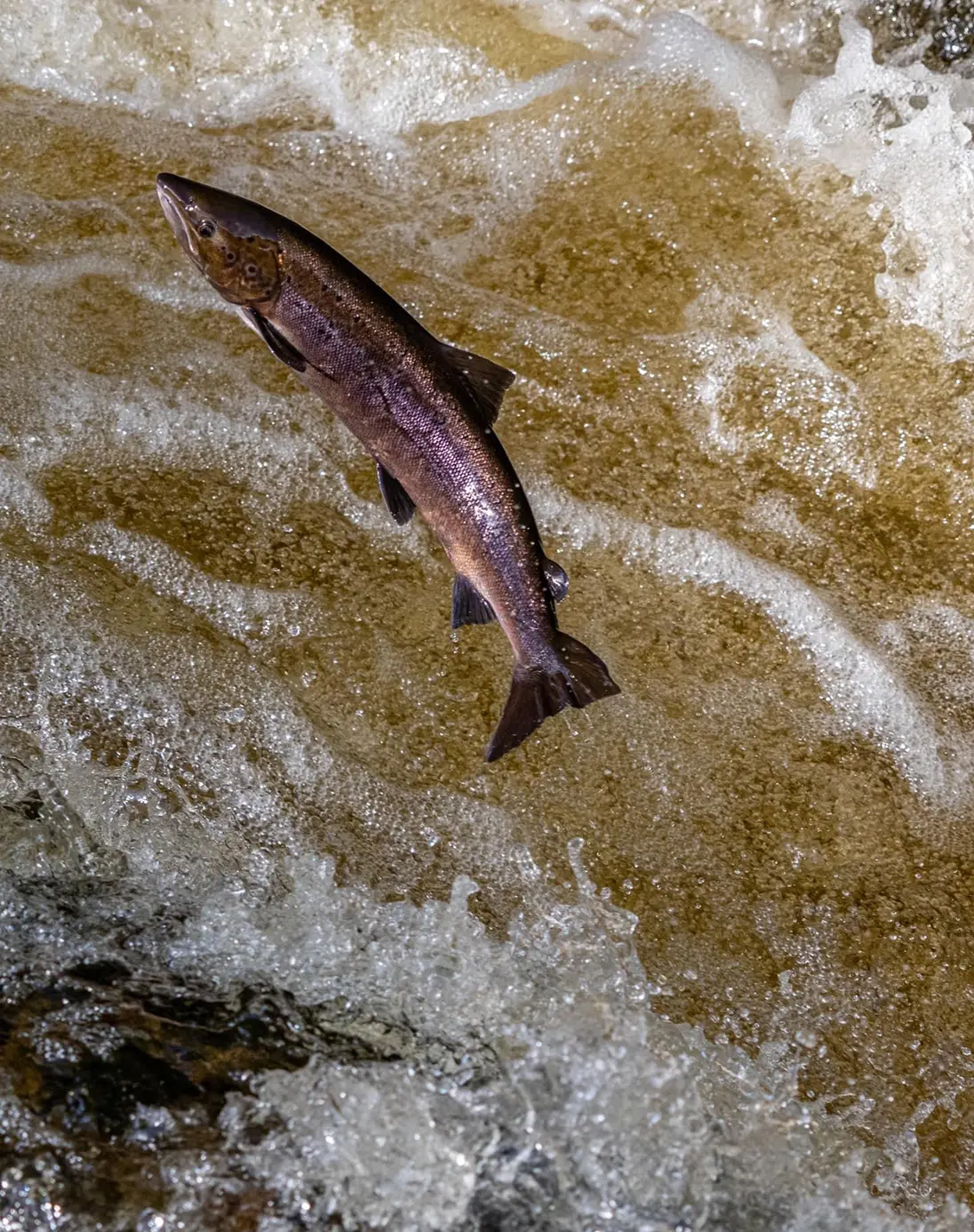
Atlantic Salmon
In 2023 Atlantic salmon were added to the International Union for Conservation of Nature (IUCN) Red List of threatened species due to extinction, climate change, pollution and fish farming. The fish spawn and hatch in Angus streams and rivers then move out to the sea as they mature, young salmon will stay in the river a few years before travelling. The adults come back to the same stream they were hatched in and move upstream to spawn, and the cycle continues. In wintertime the salmon travel upstream, “the salmon run”,it is at this time that we may see them using fish ladders or jumping up rapids. Juvenile salmon feed on insects, invertebrates and some aquatic, adults also feed on small fish. A good spot to see salmon travelling upriver is the Rocks of Solitude, Edzell.
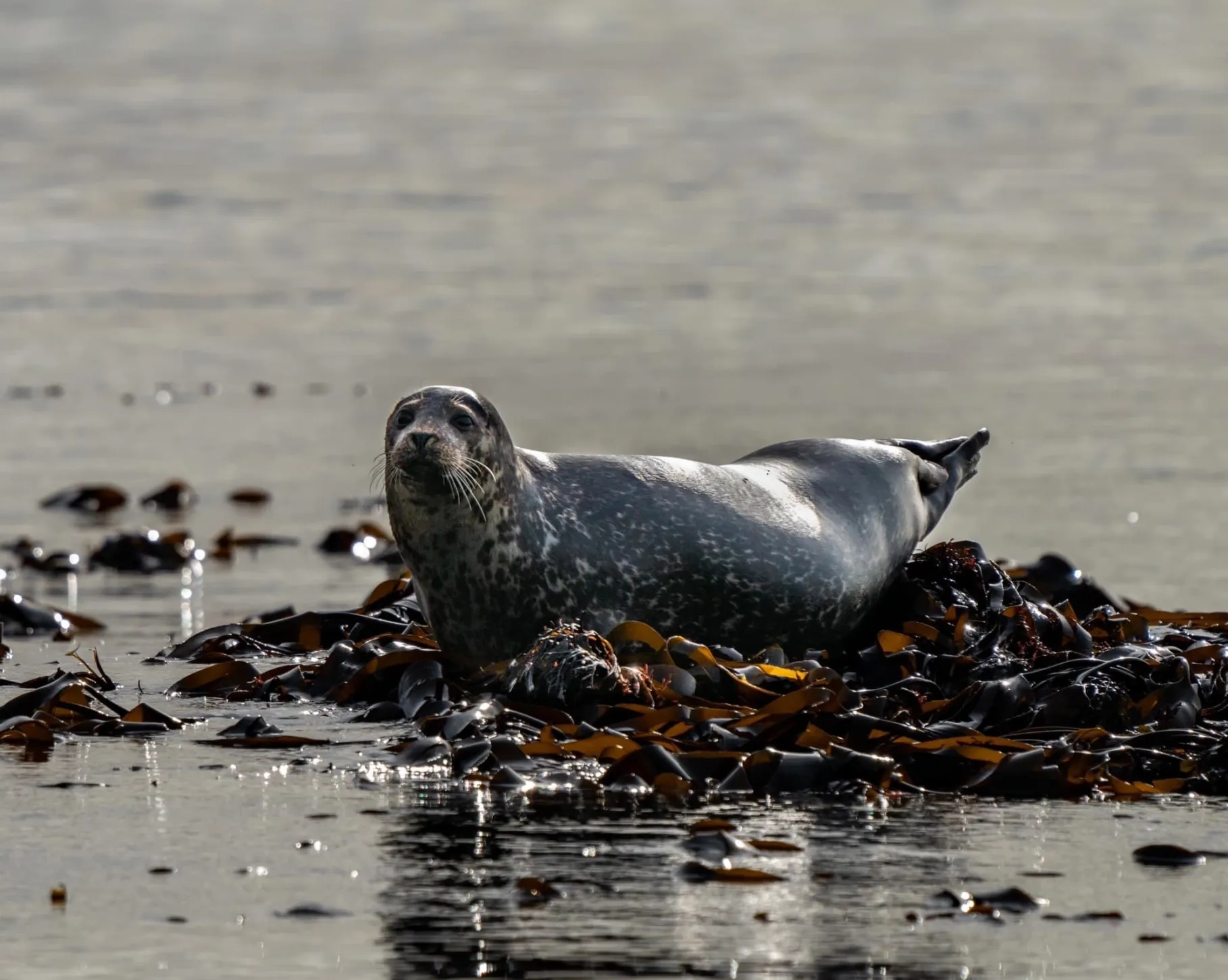
Grey Seal
The biggest of the seal species living around Scotland, the Grey Seal can often be seen resting on rocks and sandy islands at low tide. These gathering places are called ‘haul-outs', and include Arbroath’s famous Bell-rock. Adult females only give birth to one pup each year, but these seals can live 25-35 years. The pups are born with white coats in Autumn. As well as being able to hold their breath underwater for up to 45 minutes, Grey Seals can also sleep at sea or on land. They have long horse- like faces. Known for their eerie “singing”, the sound has been likened to people crying out, leading to stories of selkies and mermaids. Look for them in the Montrose Basin and around Ferry Den in Montrose.
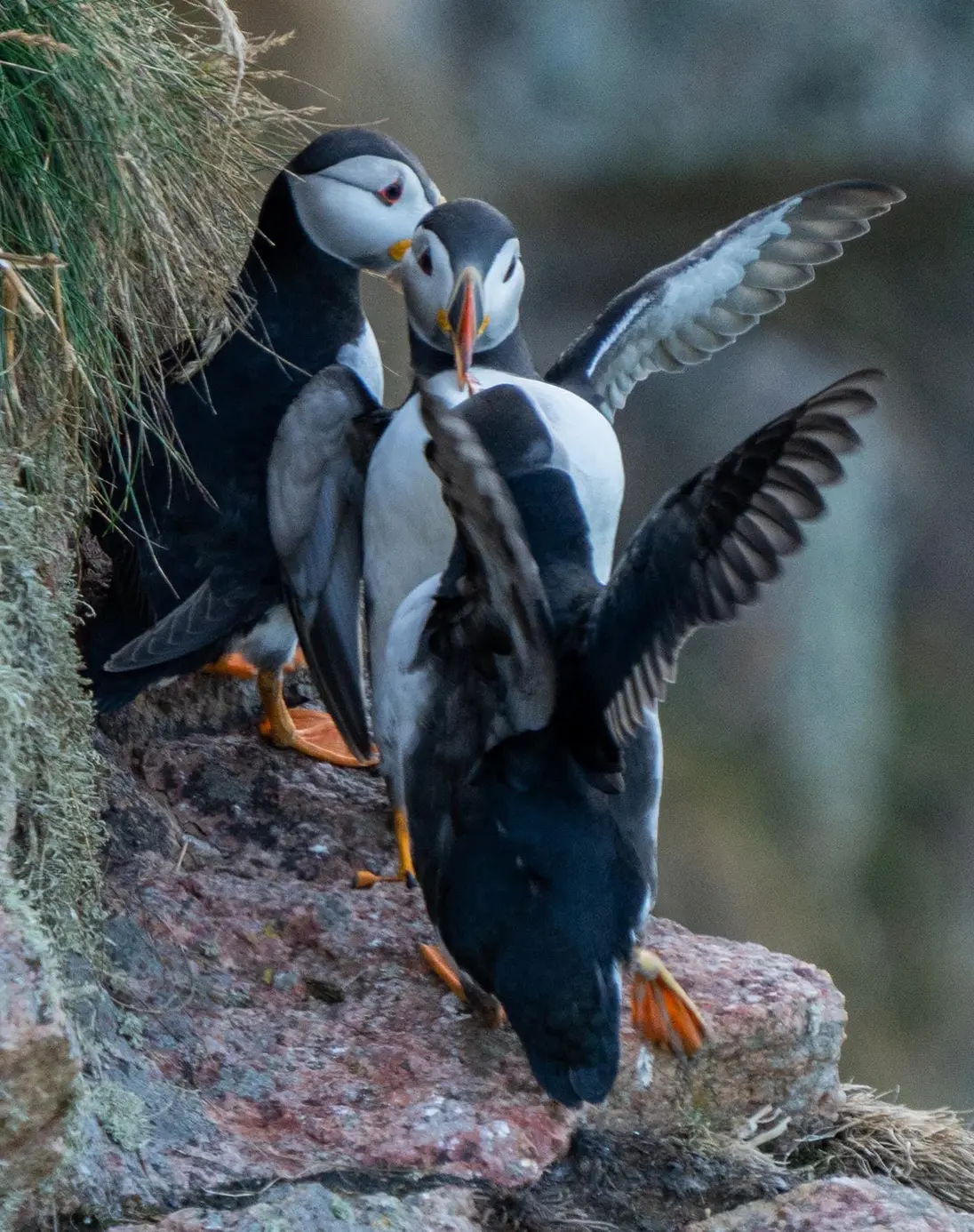
Puffin
This beautifully colourful bird has the nickname “sea-parrot” and it’s easy to see why. They have neat black and white plumage and an amazingly brightly coloured, huge bill. Puffins can fly long-distances by beating their wings 400 times per minute, but their small wings are perfectly designed for diving and swimming. They hunt fish and can often be seen in the breeding season, returning to their nest-sites between Auchmithie and Arbroath, with a colourful beak full of sand eels.
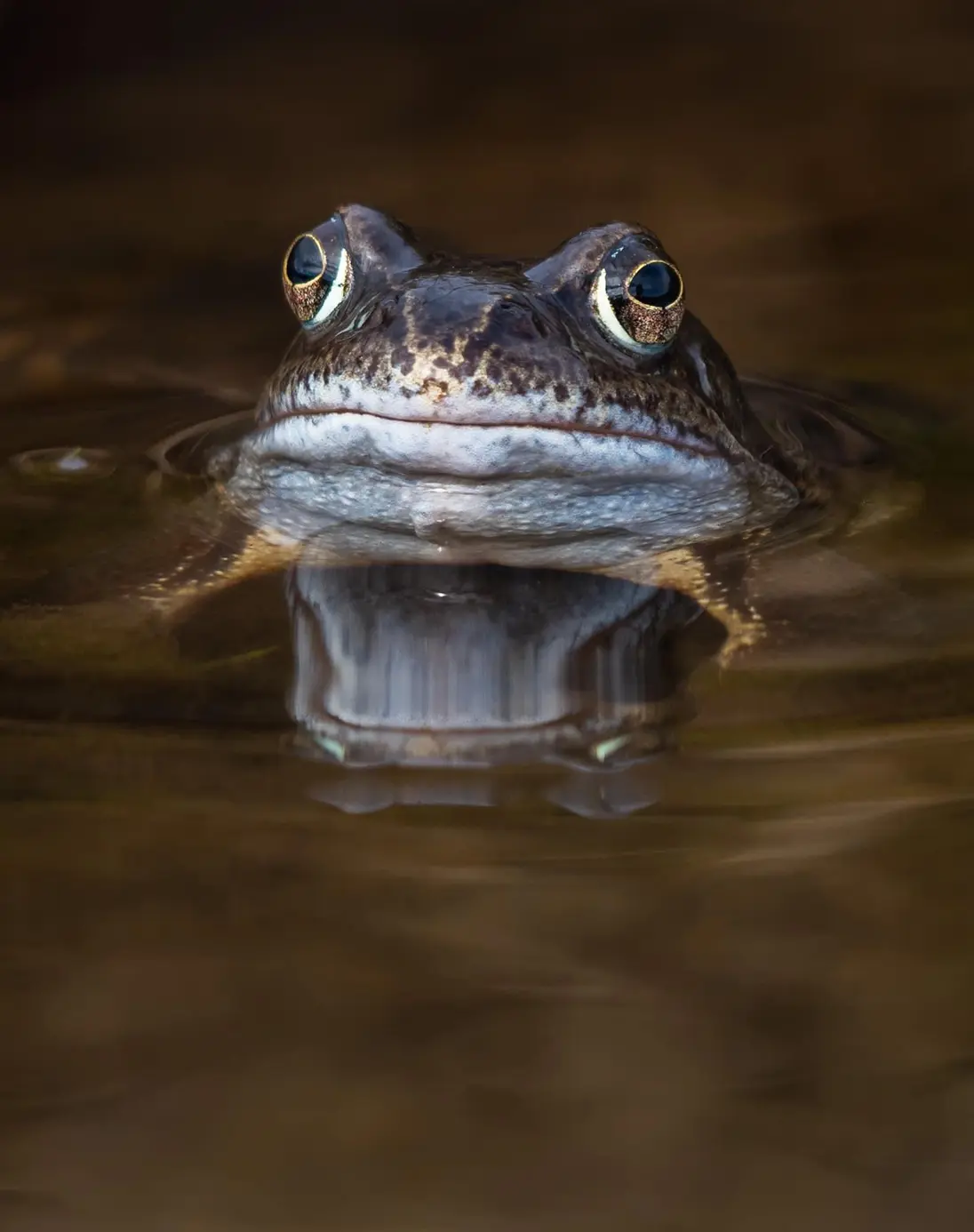
Common Frogs
Common Frogs hibernate in the winter, hiding out under logs and rocks. They become active in breeding season, springtime, and throughout the summer. They are also most active at night. Apart from breeding season when they remain in water, the frogs can be spotted in a wide range of habitats, including the Angus glens. Garden ponds are important breeding spots too. The frogs are carnivores and will eat slugs, snails, bugs and beetles. Frogs are similar to toads, but a frog is the smoother wetter looking of the two. Spot them at Keptie Pond Arbroath, Curlie ponds in Montrose, Monikie, and other wet areas.
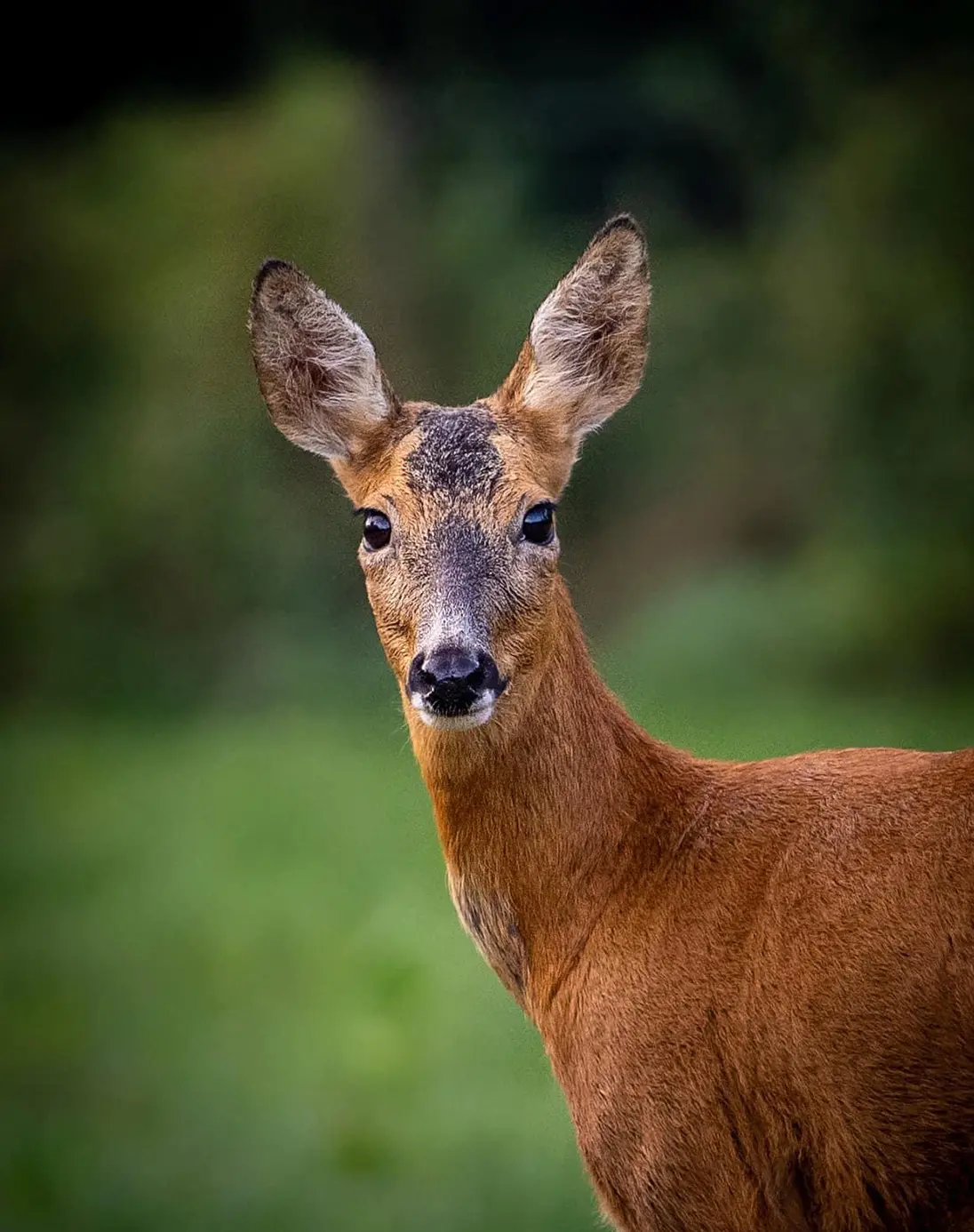
Roe Deer
Roe deer are mostly active at night but can sometimes be spotted in the early morning or evening, throughout the year. The males (bucks) shed their short straight antlers in the winter but grow them back in time for the summer rut. This time sees males competing for female deer (does). Often twins are born in early summer. Roe forage for fruit, fungi and leaves to eat. They live in the lower slopes, farmland and woodland. Look for them at Crombie park, Elliot – East haven coastal grassland areas, Barry Buddon and all of the Angus Glens.

Hooded Crow
The Hooded Crow is a close relative of the Carrion Crow which has black plumage all over. It prefers to live in the West of the British Isles and is particularly common in Scotland. It is increasingly uncommon in England. Like all members of the crow family (Corvids), the Hooded Crow is highly intelligent and can adapt to lots of different habitats and can eat a wide range of food. In Angus we don’t get many hooded crows, we may see a few hybrids where the hooded crow and carrion crow have interbred. Often in this case we see a patchwork of grey and black on the body.
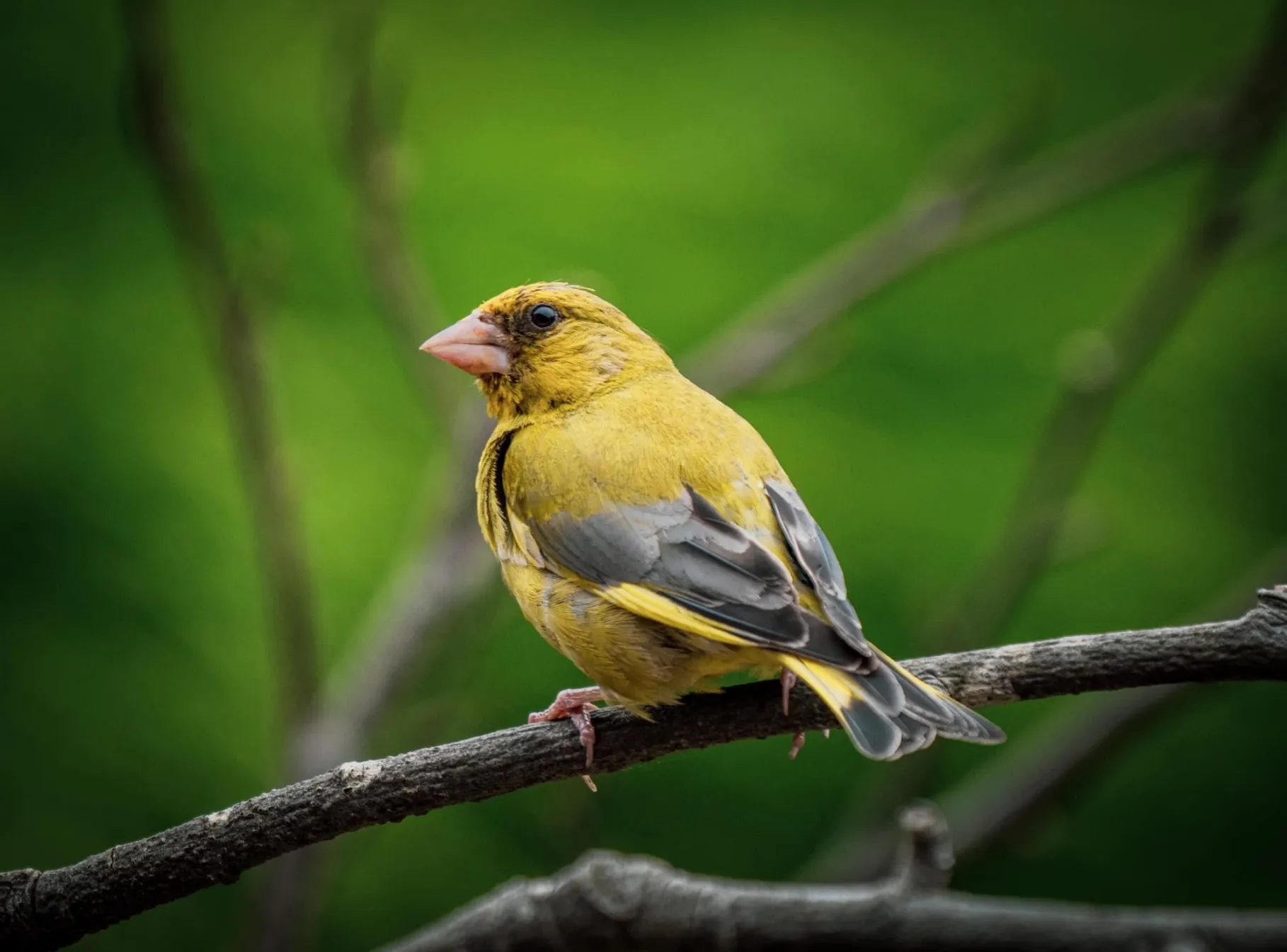
Greenfinch
Greenfinches are a chunky, attractive bird that can often be seen on garden feeders, particularly in winter when lots of birds reach the east coast of Scotland from Scandinavia. The male Greenfinch is olive-green with striking flashes of yellow on its wings. The female is a dull light brown but still has flashes of yellow on the wings. With their strong bills, Greenfinches are great at cracking open seeds and nuts. A good time of year to look for Greenfinch is late summer when there are lots of flowers and plants going to seed. Look for Greenfinch in coastal areas with wild roses such as Lunan Bay, when the rosehips are on the bushes.
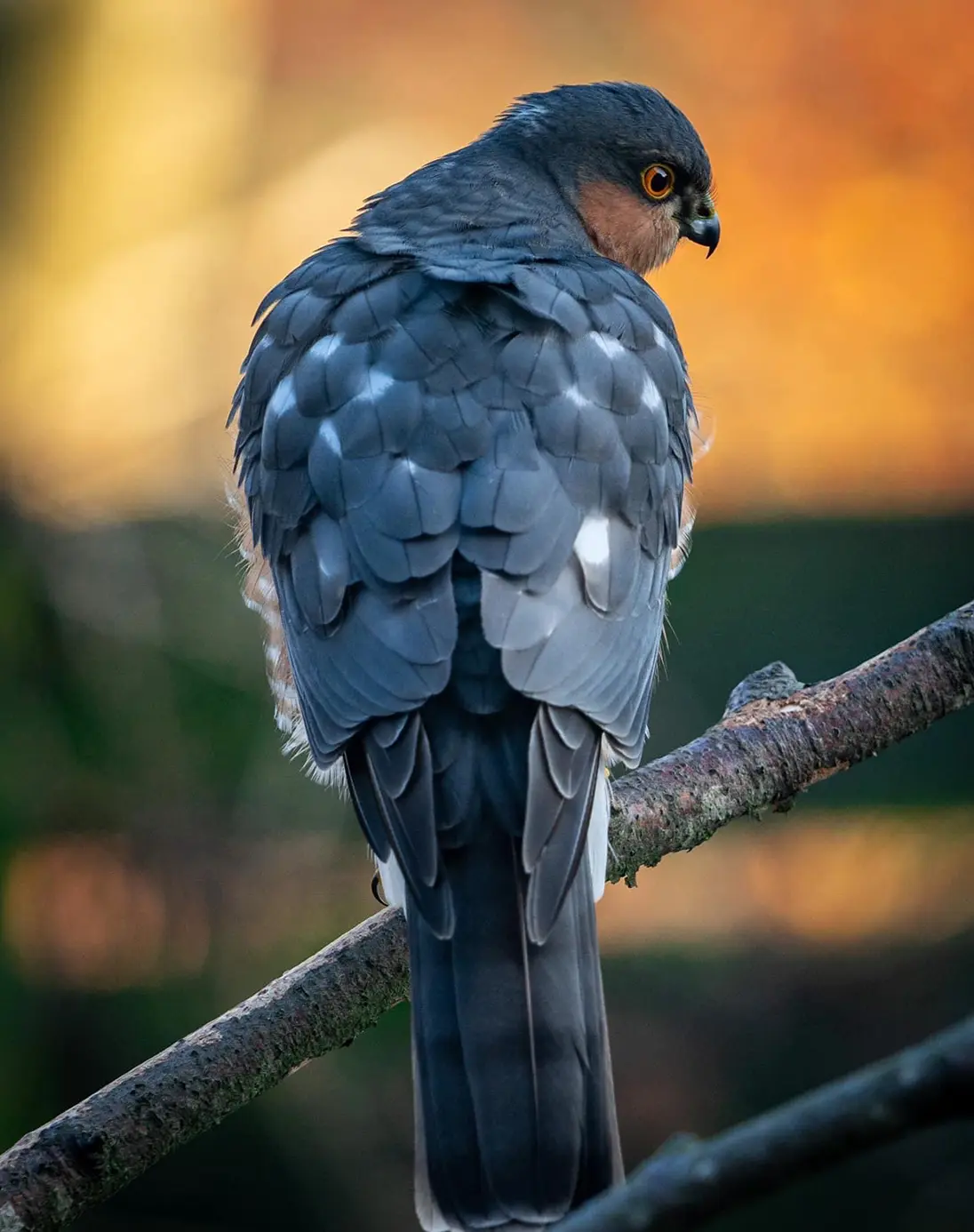
Sparrowhawk
The Sparrowhawk is now Britain’s most common bird of prey. It is often seen swooping through gardens and parkland, hunting smaller birds. The male (seen here) is considerably smaller than the female. The male is slate grey in colour. The female is a duller grey or brownish colour. In flight their tail is long but wings short and blunt to get through trees quickly. The reason they are different sizes is so that they hunt different prey. In this way, they never have to compete with one another for food. The males tend to hunt tits and finches. The females can catch birds as big as Wood Pigeons. Spot them in the grounds of Arbroath Abbey, small country roads and lanes such as St Vigeans, and along our railway embankments.

Tree Sparrow
The Tree Sparrow is often mistaken for the much more common House Sparrow. Both species can be seen in Angus gardens, but Tree Sparrows are a shy bird, more likely to be seen in farmland, hedgerows and at the edges of woodland. Tree Sparrows have chestnut brown heads, bright white throats and a black spot on their cheeks. The male and female both look the same. Tree Sparrows are a rare bird nowadays. Tree Sparrows mate for life. A pair will do everything together, including eating, bathing and preening. They nest in holes in trees and are often seen in large family groups. Look for them in small villages and edges of towns such as the outskirts of Montrose or Forfar, and small villages like Arbirlot, Auchmithie and Letham.
The photographs became inspirations for dance, drama, photography, sculpture, and painting as we explored relationships and freedom of movement.
Natural dyeing is a method of collecting natural materials and dyeing a piece of fabric with them. Foraging for natural dye materials is a great way of learning about what’s growing in your local area. Here are some examples of painting with natural dye. Lily shares more recipes for you to try.


















